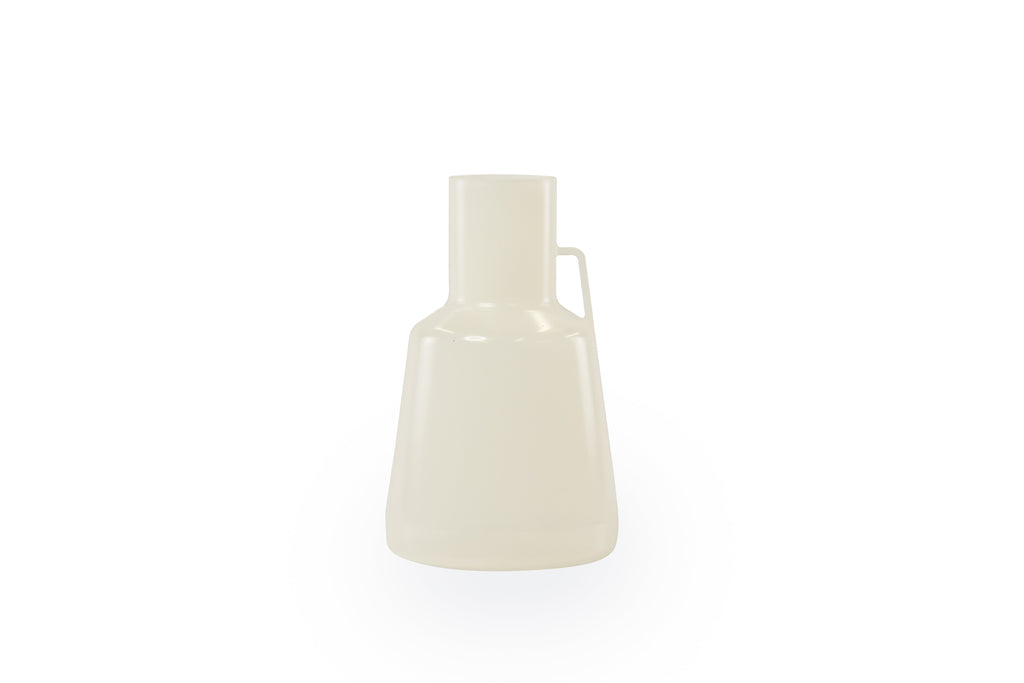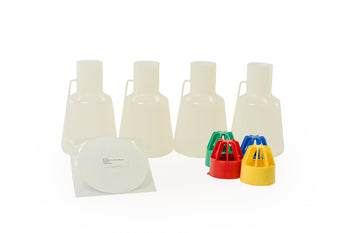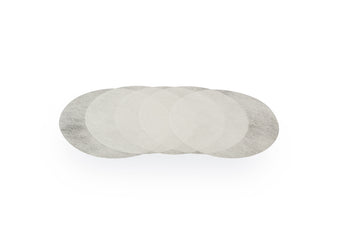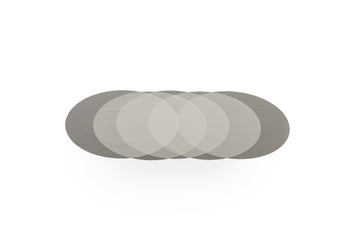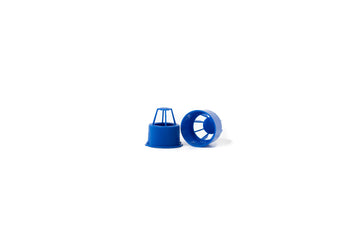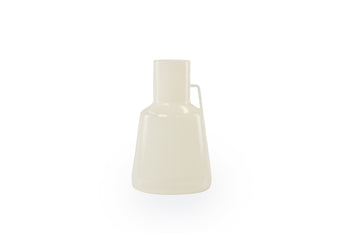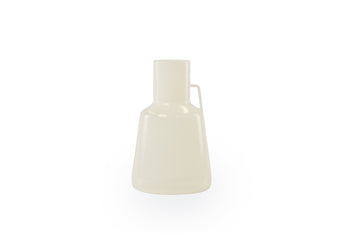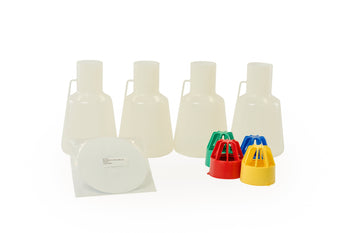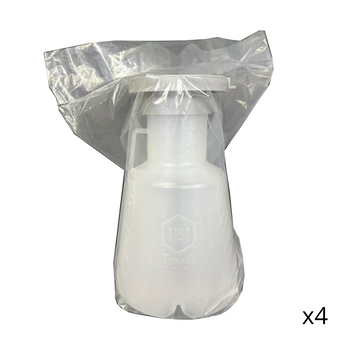
No-Baffle Flask:
The TUNAIR™ polypropylene Erlenmeyer flask is a high-quality, durable laboratory flask designed for microbiology, biotechnology, and cell culture applications. This 2.5-liter no-baffle shake flask provides a smooth, consistent mixing motion, making it ideal for applications requiring gentle aeration and minimal shear stress on cell cultures. Made from high-quality polypropylene, this Erlenmeyer flask offers superior chemical resistance, ensuring durability when exposed to most solvents.
The no-baffle design allows for a normal throw, making it comparable to a standard Erlenmeyer flask while still supporting efficient oxygen transfer and microbial growth. It is commonly used in microbial fermentation, aerobic and anaerobic culture growth, and bioprocessing, making it a valuable tool in biotechnology research, pharmaceutical development, and academic laboratories.
Cleaning & Maintenance:
All TUNAIR™ Erlenmeyer flasks and caps can be easily cleaned by soaking in water with a light detergent solution, followed by air drying. Additional options are available, including caps and filters that enhance aeration and contamination control. This 2.5L Erlenmeyer shake flask is an essential tool for researchers and laboratory professionals seeking a durable, high-performance flask for culturing microbes, bacteria, yeast, or mammalian cells. Its no-baffle design supports efficient mixing and aeration while maintaining a standard Erlenmeyer flask throw.
The TUNAIR™ polypropylene Erlenmeyer flask is a trusted choice for laboratories looking for reliable and efficient solutions for cell culture and fermentation. Its durable construction and compatibility with TUNAIR™ cap systems make it an excellent investment for scientific research and innovation.
- Accessories
- Specifications
- Technical Information
Flask Dimensions:
Flask Size: 2.5 L
Working Volume: 1 L
Base Diameter: 6.50” [16.51 cm]
Neck Diameter: 3.00” [7.62 cm]
Height: 10.75” [27.31 cm]
Height With Cap in Place = 12.75"
Weight: 0.02 lbs. [0.008 Kg]
Mixing:
No-Baffle (0 Baffles): Normal Throws
Shaker Speed:
1” Throws: 300-400 rpm or possibly higher
2” Throws: 150-200 rpm or possibly higher
Material:
All TUNAIR flasks and caps are constructed of chemical resistant polypropylene. All flasks and caps are fully autoclavable.
300 ml flask:
Allows for approx. 150 ml (max) of working volume for culturing cells
2.5 Liter flask:
Allows for approx. 1 liter (max) of working volume for culturing cells
No-Baffle:
The bottom inside of the flask is smooth and flat. This configuration will generate a single vortex within the media inside the flask when fastened to an orbital shaker. The shaker will need to operate at speeds above 160 rpm in order to form that vortex in the media.
Two Piece Cap:
The 300 ml flask and 2.5 L flask both have a special cap and filter system that promotes gas exchange and maintains sterility of the growth culture during use. The inner portion of the cap unsnaps from the outer portion by pushing in the tabs on the side of the cap assembly and then pulling the insert out.
0.2-micron filters:
There are two different types of 0.2-micron filters available for the TUNAIR flasks. These filters allow for maximum gas exchange while maintaining sterility.
Dri-Gauze – This is a paper filter than can be used approx. 6 to 8 times before having to be replaced. This filter can be autoclaved while in the cap, on the flask, for 6 to 8 times.
Silicone – This is a silicone filter that will last the life of the flask. This filter can be autoclaved while in the cap and on the flask for many times.
Cap & Filter assembly:
Once you have the 2-piece cap assembly apart (either the 300 ml cap or the 2.5 L cap) place the corresponding filter size inside the cap and the re-assemble the inner and outer cap pieces making certain to align the tabs with their associated holes. Once clipped into place, make certain the filter completely covers the cap assembly openings.
Attaching the flasks to your shaker:
IBI TUNAIR flasks can be used with nearly all standard shakers and shaker clamps. The 2.5-liter flask typically fits best into the 2-liter shaker clamp. The 300 ml flask typically fits best in the 250 ml shaker clamp.
Preparing and Cleaning the TUNAIR flask:
Your TUNAIR flasks are constructed of polypropylene plastic which allows them to be autoclaved. Once you have prepared your media inside the flask you can place the cap & filter on the flask and insert into the autoclave. Set the autoclave for wet cycle.
Once you have harvested your cells, wash the TUNAIR flask in a mild dish soap such as Dove Dish Soap then rinse well with DI water. Do NOT rinse the Dri-Gauze filter between uses. The silicone filter can also be rinsed with DI water if needed. Observe the condition of the filters between runs to make certain there are no holes or tears in the filter. If there are, replace the filter immediately.
Cell Growth Evaluation of Commonly Used Shake Flasks:
TUNAIR™ flasks were compared to conventional flasks using four different types of microorganisms; Escherichia coli, Saccharomyces cerevisiae, Penicillium avellaneum, and Streptomyces chartreusis. The aeration capacities of the shake flasks were determined by the sulfate oxidation method, and the values shown below are presented as oxygen absorption rate (OAR) in mM oxygen/L/Min. The growth rates of E.coli and S.cerevisiae were expressed as optical densities (OD) at 555 mM. For S.chartreusis and P.avellaneumgrowth rates were evaluated by percent sedimentation. For E.coli and S.cerevisiae, the growth rates were determined after an 18-hour incubation period; for S.charteusis, a 24-hour incubation period; and for P.avellaneum, a 72-hour incubation period. Growth and OAR evaluations were carried out with 3-9 replicates and statistically analyzed using Turkey’s w-procedure. See results below.
Growth Chart:
| OAR Value | OD @ 555 mM | % Sedimentation | |||
|---|---|---|---|---|---|
| Flask | mM O2/L/Min. | E.coli | S.cerevisiae | S.chartreusis | P.aveilaneum |
| TUNAIR™ Full-Baffle | 4.25 | 7.09 | 5.63 | 19.7 | 3.3 M |
| TUNAIR™ Half-Baffle | 1.22 | 5.36 | 5.57 | 27.73 | 30.50 P |
| Triple Indented Flasks | 2.47 | 5.97 | 5.31 | 19.20 | 9.50 MP |
| Unbaffled Erlenmeyer | 0.52 | 5.97 | 5.19 | 17.37 | 25.10 P |
Growth Morphology:
M, mycelial; P, pellet; MP, mixed mycelial. The mycelial growths mostly adhered to the walls of the flask, which accounted for the low overall sedimentation value.
Reference Papers:
1. Method to Increase the Yield of Eukaryotic Membrane Protein Expression inSaccharomyces Cerevisiae
2. Optimisation of Recombinant Production of Active Human Cardiac SERCA2a ATPase

